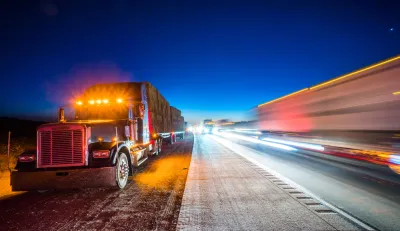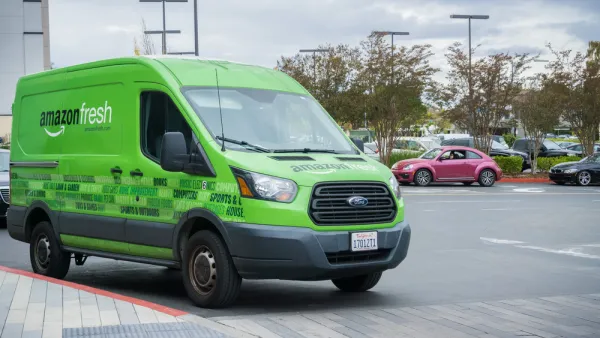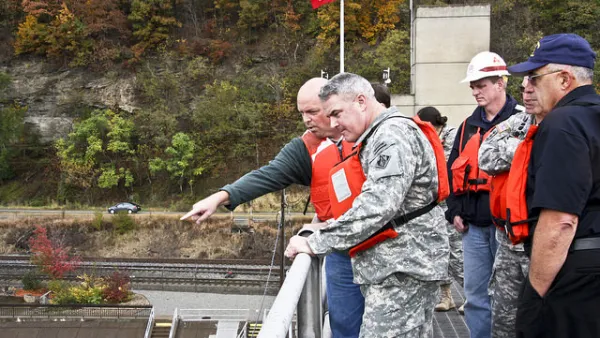A powerful lobby is more in interested in protecting its monopoly than lessening congestion and pollution.

"For many Americans, the experience of driving on a coastal highway like Interstate 5 in California can be a nightmare of dodging massive trucks hauling cargo between US cities," reports Erik Olsen.
According to Olsen, only 2 percent of domestic freight moving among the Lower 48 states moves by sea, despite the fact that about half the population lives near the coast.
The reason so much freight moves on the nation's roadways is the subject of Olsen's article, and credit goes to the Jones Act. The Jones Act, passed shortly after World War I, "preserves a monopoly for US-built, owned and operated ships to transport goods between US ports."
According to Olsen, the law was designed to protect American shipbuilding and "ensure that the US had ample ships to conduct international trade." The law didn't manage to protect the industry, however, and now "there are some 171 privately-owned US flagged ships today. Just 93 of them are Jones Act-eligible."
Thus, the consequences of the Jones Act in 2017 include higher costs for consumer goods as well as more freight on trucks. The latter, according to Olsen, "significantly increasing highways congestion, intensifying air pollution and further degrading the country’s infrastructure."
Olsen provides additional details about the consequences of the Jones Act, and discusses the business interests that have made the law virtually impossible to overturn.
FULL STORY: An arcane American law protected by powerful interests is causing insane traffic jams

National Parks Layoffs Will Cause Communities to Lose Billions
Thousands of essential park workers were laid off this week, just before the busy spring break season.

Retro-silient?: America’s First “Eco-burb,” The Woodlands Turns 50
A master-planned community north of Houston offers lessons on green infrastructure and resilient design, but falls short of its founder’s lofty affordability and walkability goals.

Delivering for America Plan Will Downgrade Mail Service in at Least 49.5 Percent of Zip Codes
Republican and Democrat lawmakers criticize the plan for its disproportionate negative impact on rural communities.

Test News Post 1
This is a summary

Test News Headline 46
Test for the image on the front page.

Balancing Bombs and Butterflies: How the National Guard Protects a Rare Species
The National Guard at Fort Indiantown Gap uses GIS technology and land management strategies to balance military training with conservation efforts, ensuring the survival of the rare eastern regal fritillary butterfly.
Urban Design for Planners 1: Software Tools
This six-course series explores essential urban design concepts using open source software and equips planners with the tools they need to participate fully in the urban design process.
Planning for Universal Design
Learn the tools for implementing Universal Design in planning regulations.
EMC Planning Group, Inc.
Planetizen
Planetizen
Mpact (formerly Rail~Volution)
Great Falls Development Authority, Inc.
HUDs Office of Policy Development and Research
NYU Wagner Graduate School of Public Service




























